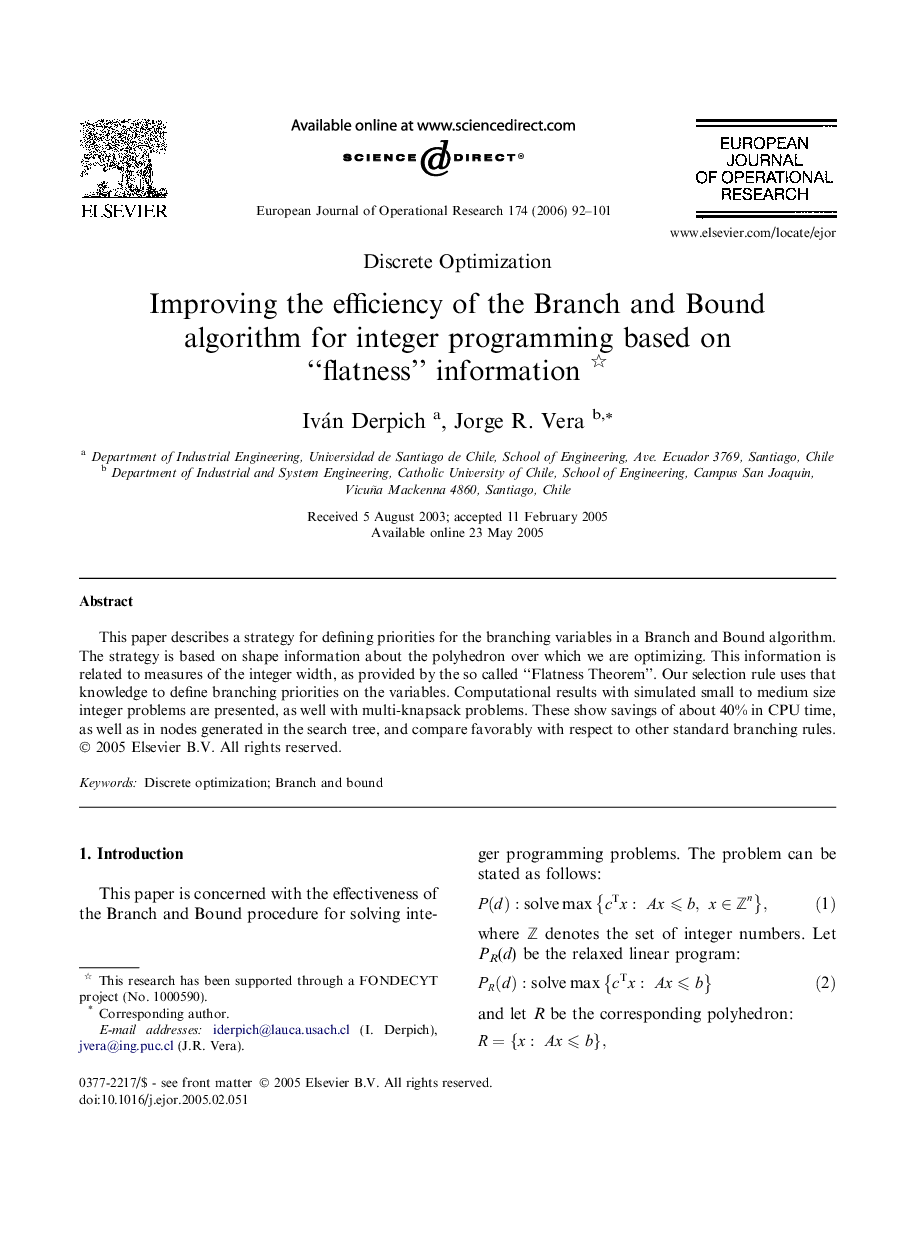| Article ID | Journal | Published Year | Pages | File Type |
|---|---|---|---|---|
| 477866 | European Journal of Operational Research | 2006 | 10 Pages |
Abstract
This paper describes a strategy for defining priorities for the branching variables in a Branch and Bound algorithm. The strategy is based on shape information about the polyhedron over which we are optimizing. This information is related to measures of the integer width, as provided by the so called “Flatness Theorem”. Our selection rule uses that knowledge to define branching priorities on the variables. Computational results with simulated small to medium size integer problems are presented, as well with multi-knapsack problems. These show savings of about 40% in CPU time, as well as in nodes generated in the search tree, and compare favorably with respect to other standard branching rules.
Related Topics
Physical Sciences and Engineering
Computer Science
Computer Science (General)
Authors
Iván Derpich, Jorge R. Vera,
